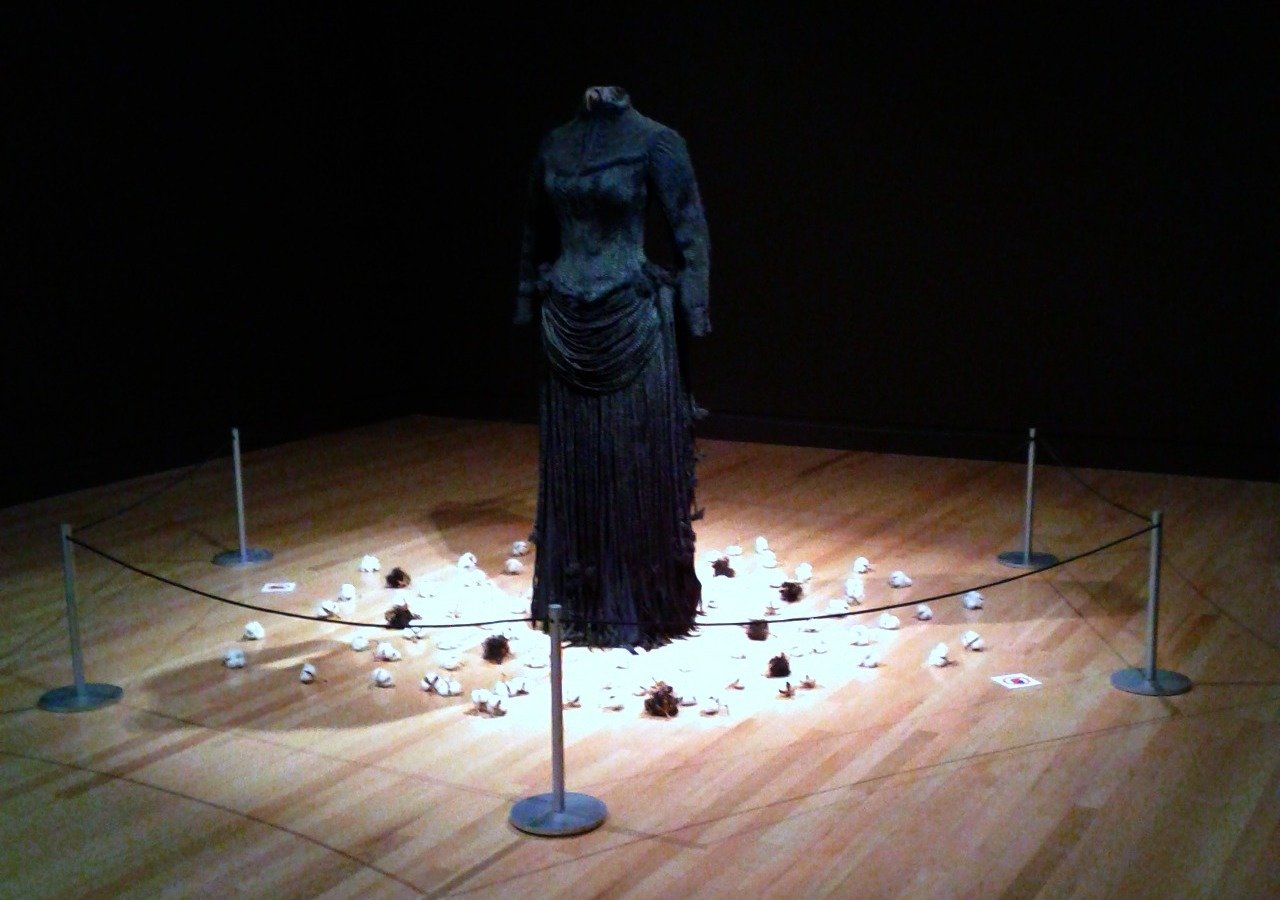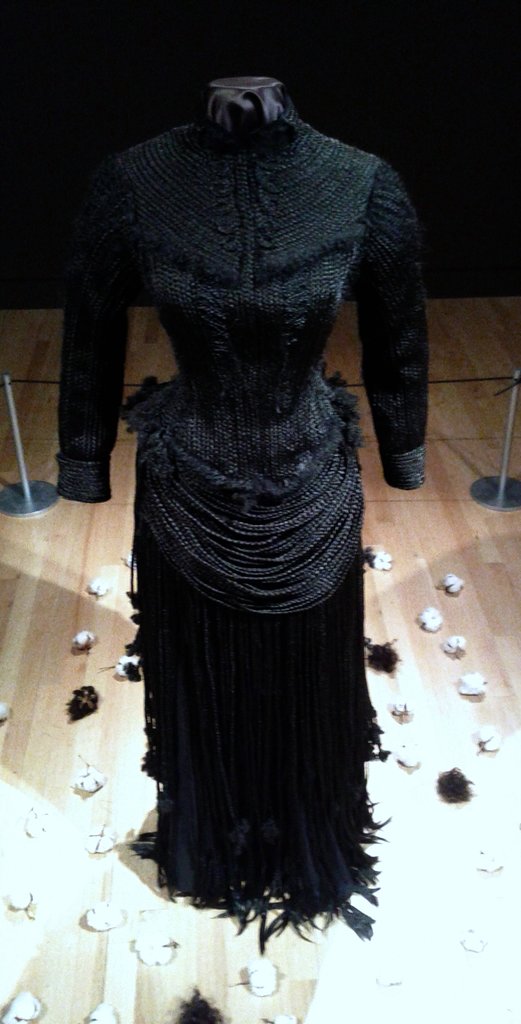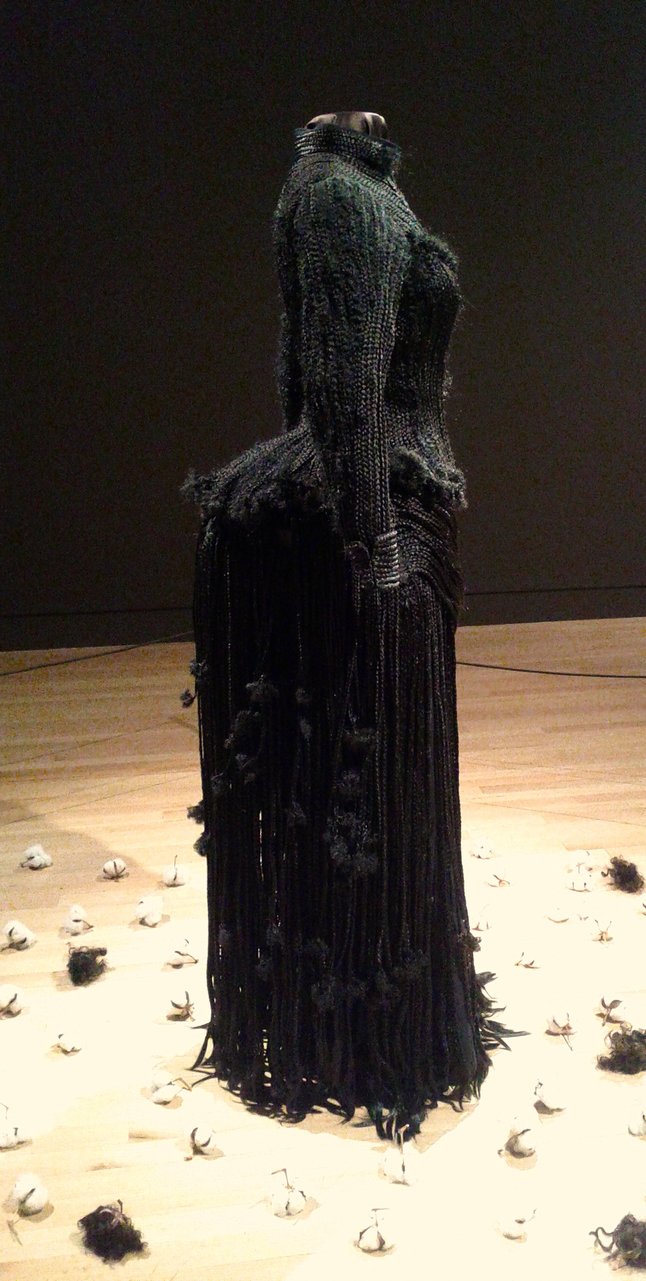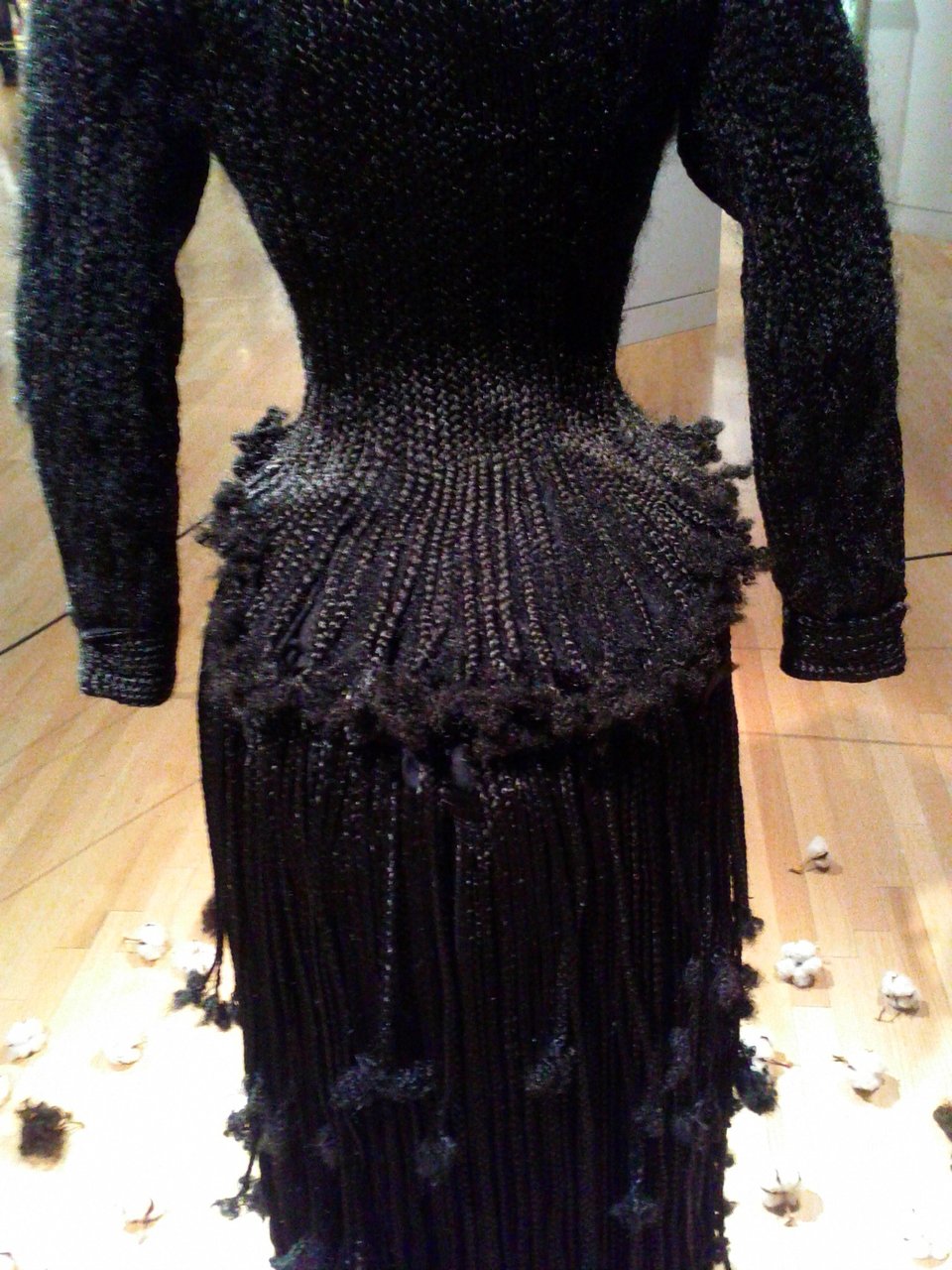 Karin Jones, Worn: Shaping Black Feminine Identity, synthetic hair and cotton bolls, 2015.
Karin Jones, Worn: Shaping Black Feminine Identity, synthetic hair and cotton bolls, 2015.
Worn: Shaping Black Feminine Identity is an exhibit at the Royal Ontario Museum by Vancouver-based artist Karin Jones. It is the first installation of the ROM’s Of Africa series: a three-year project that explores African and diasporic themes, histories, and artists. The goal of the project is to reconstruct the current representations of African culture and of its diaspora, by enabling fresh dialogue of the future of Africa while acknowledging the past.
 Karin Jones, Worn: Shaping Black Feminine Identity, synthetic hair and cotton bolls, 2015.
Karin Jones, Worn: Shaping Black Feminine Identity, synthetic hair and cotton bolls, 2015.
The installation is of a Victorian mourning dress fashioned out of synthetic hair used in several African braiding styles. On the floor are cotton bolls and synthetic hair bolls laying around to give allusion to the figure above, being born out of cross-cultural “forces”. Karin Jones outlines several different ideas behind the design of her dress: one purpose is to shed light on the hard labours of Africans throughout their contributions to the development of the British Empire. Another purpose — the one that was most obvious to me when I first lay eyes on the installation — is to bring forth the fact that the silhouettes of African women inspired the shape of the Victorian bustle dress, with possibly the most notable figure being Sarah Baartman. Baartman was a South African woman who was put on display as part of freak show exhibitions across Europe due to her physique, and whose body parts were exhibited in Paris’ Museum of Man after her death. Jones might have chosen to specifically create a mourning dress because, although it’s important to recognize these parts of history that are actually dismissed in academia, they are terrible facts that have played roles in Africa’s story of colonialism, and blunt acts of racism.
 Karin Jones, Worn: Shaping Black Feminine Identity, synthetic hair and cotton bolls, 2015.
Karin Jones, Worn: Shaping Black Feminine Identity, synthetic hair and cotton bolls, 2015.
As a black female myself who has had a long history wearing synthetic braids, and who is also familiar with the reasoning behind this particular piece of 19th century fashion, I admire Karin Jones for pairing two historically powerful and dominant symbols together to convey her message. It is a simple, easily understandable one with heavy depth that allows us to remember a part of the story of our ancestry.
 Karin Jones, Worn: Shaping Black Feminine Identity, synthetic hair and cotton bolls, 2015.
Karin Jones, Worn: Shaping Black Feminine Identity, synthetic hair and cotton bolls, 2015.
Karin Jones chose to use this African-style of braiding technique because she wanted the audience to acknowledge braiding as a decorative art craft, just as much as any European decorative art. The amount of patience, love and care one must have to braid and the skill that needs to be developed certainly makes this an artistic craft. There are so many different styles; it’s a huge part of African culture and its diaspora, so I completely agree with the artist that it should be regarded as so.
Text and photo: Joséphine Mwanvua
*Exhibition information: February 3 – November 1, 2015, Royal Ontario Museum, 100 Queens Park, Toronto. Gallery hours: Mon – Thurs & Sat – Sun, 10 a.m. – 5:30 p.m. Fri 10 a.m. – 8:30 p.m.
